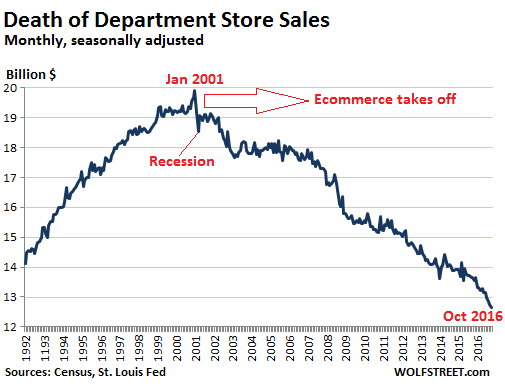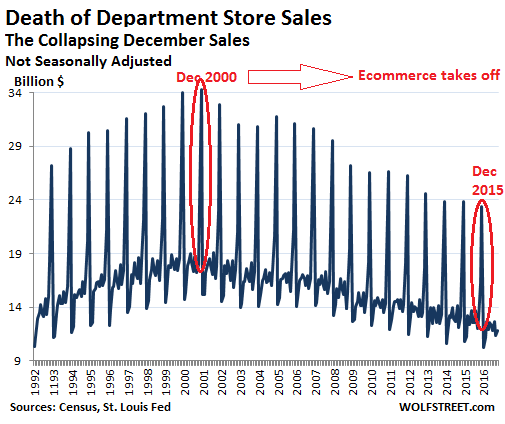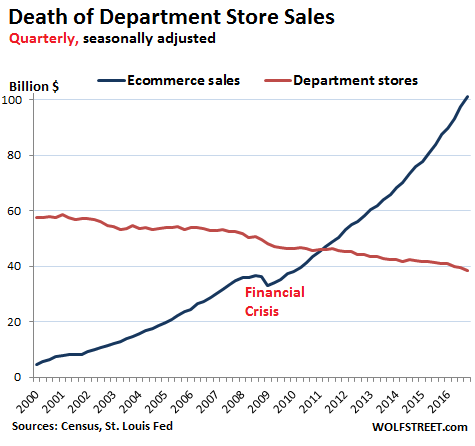by Dave
On Friday gold fell -4.20 to 1186.10 on heavy volume, and silver rose +0.15 to 16.59 on very heavy volume. Gold and silver both sold off early in Asia making new lows, and then managed to recover somewhat – with silver doing substantially better than gold.
On the week, gold fell -21.20 [-1.76%], silver dropped -0.06 [-0.39%], GDX fell -2.09%, and GDXJ moved down -2.09%. In addition, platinum dropped -1.65%, palladium rose +2.07%, while copper screamed up +8.70%. Copper is now trading at 2.69, up 28% over just the last month. Copper is seriously overbought, but it still seems to be motoring higher.
Gold’s break through 1200 support was the major event in PM this week. On Friday, gold made a new low to 1170.30 before bouncing back. The drive through 1200 occurred on Wednesday, triggered by the dollar breaking out to new highs. Gold is now very oversold (RSI-7=11), and the “high wave” candle print on Friday is bullish: a 43% chance of a low.
If the buck cooperates by topping out, I believe we will see a bounce in gold in the very near future.
December rate-increase chances are at 94%.
This week, gold open interest fell by -62,441 contracts, almost double last week’s drop. Quoth the commercials: ka-ching! ka-ching!

Silver also made new lows this week, but ended up dropping substantially less than gold. This caused the gold/silver ratio to fall back a bit, losing -1.21 to 71.49, which seems relatively bullish. The candle print on Friday was a bullish harami, which the candle code says is quite bullish; a 73% chance of marking a low. Since copper did absurdly well this week, this probably helped provide some measure of support for silver.

Miners
Miners drifted sideways and lower this week; they managed to avoid making a new low, which is certainly better than both gold and silver, but the candle print on Friday was a bit feeble: a very low-rated “spinning top”, which the candle code gives a sub-10% chance of marking the low. There appeared to be some relatively strong buying on Wednesday (the day gold plunged through 1200 support) that kept the miners from making a new low, and over the last 3 trading days we saw the miners rally in the last 30 minutes of trading. The GDX:$GOLD ratio was up slightly on the week, while the GDXJ:GDX ratio was unchanged. Ultimately, plunging gold prices didn’t send the mining shares over the cliff, and that’s good news.
USD
The buck rose +0.24 to 101.45, breaking to a new high of 102.02 on Thursday before retreating. The buck was very close to printing a swing high on Friday, avoiding that outcome by just 0.03. The buck is overbought (RSI-7=77) and momentum is definitely starting to slow. The candle print on Friday was just a “long black” candle, which the candle code says could go either way – although the probability of a top is higher than the rating for a continuation – around 60/40. A look at the Euro chart also shows slowing momentum, although like with the buck, there is no clear reversal yet in the Euro. The Yen is extremely oversold (RSI-7=7), but momentum for the Yen does not appear to be slowing.
US Equities/SPX
The US equity market rallied +31.45 [+1.44%] to 2213.35, making a new all time high on Friday. US small cap stocks (RUT) have been up 15 straight days – that has to be some kind of record – and both RUT and DJIA made new all time highs on Friday. SPX is overbought (RSI-7=82), but the “white marubozu” candle print on Friday is just a 15% chance of marking the top. VIX dropped -0.51 to 12.34.
This week was about materials, industrials and energy; the very strong rally in industrial metals seemed to be the proximate cause. Sickcare performed worst – and looking at the moving averages, sickcare has definitely diverged from the rest of the market.
| Name | Chart | Chg (W) | 52w ch | EMA9 | MA50 | MA200 | 50/200 | Last Crossing | last |
| Materials | XLB | 2.57% | 8.64% | rising | rising | rising | falling | ma50 on 2016-11-08 | 2016-11-25 |
| Industrials | XLI | 2.30% | 13.82% | rising | rising | rising | rising | ema9 on 2016-11-07 | 2016-11-25 |
| Energy | XLE | 2.24% | 7.30% | rising | rising | rising | falling | ema9 on 2016-11-14 | 2016-11-25 |
| Cons Discretionary | XLY | 2.19% | 1.85% | rising | rising | rising | rising | ma50 on 2016-11-10 | 2016-11-25 |
| Homebuilders | XHB | 2.13% | -5.93% | rising | rising | rising | falling | ma200 on 2016-11-17 | 2016-11-25 |
| Utilities | XLU | 1.88% | 10.32% | rising | falling | rising | falling | ema9 on 2016-11-25 | 2016-11-25 |
| Telecom | XTL | 1.65% | 19.10% | rising | rising | rising | falling | ma50 on 2016-11-08 | 2016-11-25 |
| Cons Staples | XLP | 1.43% | 2.52% | rising | falling | rising | falling | ema9 on 2016-11-25 | 2016-11-25 |
| Technology | XLK | 1.35% | 9.31% | rising | rising | rising | falling | ma50 on 2016-11-17 | 2016-11-25 |
| REIT | RWR | 1.35% | -1.38% | rising | falling | rising | falling | ema9 on 2016-11-22 | 2016-11-25 |
| Financials | XLF | 1.13% | 12.28% | rising | rising | rising | rising | ema9 on 2016-11-07 | 2016-11-25 |
| Healthcare | XLV | -0.32% | -3.62% | falling | falling | rising | falling | ema9 on 2016-11-22 | 2016-11-25 |
| Gold Miners | GDX | -2.09% | 53.23% | falling | falling | rising | falling | ema9 on 2016-11-10 | 2016-11-25 |
Gold in Other Currencies
Gold had a bad week in almost every currency; only in Yen did gold do well, and that’s just because JPY fell -1.90% on the week vs USD. Gold dropped in XDR by -25.90.

Rates & Commodities
TLT was almost unchanged, falling just -0.02% on the week. TLT is trying hard to put in a low, but missed a swing low this Friday by just a few pennies.
JNK rallied +1.32%, moving back to within a few pennies of its 50 MA. JNK appears to be headed back into an uptrend, although it is not quite there yet.
CRB rose +1.41%, led by a massive rally in industrial metals. CRB had some problems on Friday because of the big move down in crude oil.
Crude rose +0.13 to 45.96, rallying strongly on Tonday and Tuesday, and then plunging almost $2 on Friday. The gyrations in oil are all about expectations for the OPEC talks next week; first there was happy news from Russia saying they were on board for a production freeze, but then Friday saw the Saudis withdraw from the “non-OPEC” meeting next Monday (“why meet with non-OPEC until we get the OPEC group in line” – boom, oil drops $2), while on the same day Iraq agreed to participate in production cuts for the first time. Oil equities were down just slightly even though oil cratered on Friday. I think the setup for an oil rally is a good one. The drop on Friday sets up a slingshot for next week. I don’t think OPEC can afford to fail this time – nobody wants to see oil down at $35.
If you are feeling brave, you can buy a CL futures contract Sunday night, which is 1000 barrels of “paper oil”, or $1000 for every $1 change in the price of crude. For the poor folks (like me) there is the half-sized QM contract; a $500 gain/loss per $1 change in the underlying. If OPEC passes something, its probably a $10,000 gain per CL contract. If they don’t agree, then maybe an $8,000 loss.
Physical Supply Indicators
* SGE premium to COMEX has risen to $22.19 over COMEX. Chinese are buying the dip with both hands.
* The GLD ETF tonnage on hand fell -30.25 tons, with 885 tons in inventory.
* ETF Premium/Discount to NAV; gold closing of 1186.10 and silver closing of 16.59:
PHYS 9.66 -1.01% to NAV [down]
PSLV 6.28 -0.59% to NAV [up]
CEF 11.73 -8.95% to NAV [down]
* Big bar premiums are lower for gold [1.92% for 100 oz bars in NYC], higher for silver [+3.43% for 1000 oz bars in NYC], and higher for silver eagles at +16.03% [NYC].
Futures Positioning
There was no COT report this week because of the Thanksgiving holiday in the US.
Moving Average Trends [9 EMA, 50 MA, 200 MA]
No material change this week. Everything is still a sea of red, although with silver and the silver miners performing best, things aren’t as bad as they could be, and the downside momentum especially for silver has definitely slowed.
| Name | Chart | Chg (W) | 52w ch | EMA9 | MA50 | MA200 | 50/200 | Last Crossing | last |
| Silver | $SILVER | -0.39% | 17.87% | falling | falling | rising | falling | ema9 on 2016-11-11 | 2016-11-25 |
| Silver Miners | SIL | -1.21% | 77.09% | falling | falling | rising | falling | ma200 on 2016-11-11 | 2016-11-25 |
| Platinum | $PLAT | -1.65% | 8.57% | falling | falling | falling | falling | ema9 on 2016-11-10 | 2016-11-25 |
| Gold | $GOLD | -1.76% | 12.21% | falling | falling | falling | falling | ma200 on 2016-11-08 | 2016-11-25 |
| Junior Miners | GDXJ | -2.09% | 80.36% | falling | falling | rising | falling | ma200 on 2016-11-10 | 2016-11-25 |
| Senior Miners | GDX | -2.09% | 53.23% | falling | falling | rising | falling | ema9 on 2016-11-10 | 2016-11-25 |
Gold Manipulation Report
On Friday, two hours into the trading day in Asia, there were two 2k+ contract down spikes in a 3 minute period that took gold down about $11 to the new low of 1170.30. Buyers appeared fairly rapidly, eventually pushing price back up above the 1180 line of departure. I’d call this more bullish than bearish behavior, and if this was an attempt to break the price of gold sharply lower on the light trading day after Thanksgiving, it failed.
Summary
A dollar breakout to a new high of 102.02 caused gold to plunge through 1200 support; silver followed gold lower but was not as badly hit, and the miners bounced off support. SPX, DJIA, and RUT all made new all time highs this week. In the west, we appear to be back to a “nobody cares” situation for gold, with money pouring into equities and especially small cap stocks. Crude is experiencing a lot of volatility because of the upcoming OPEC meeting next week; an agreement means a $10 spike higher, and a failure means crude probably drops down into to the mid-30s.
No COT report this week. The big drop in open interest for gold suggests a whole lot of short-covering by the commercials, but we won’t know the details until next Monday when the COT numbers are released.
Gold and silver big bar shortage indicators show no signs of shortage in the west; the ETF premiums were mostly lower, and GLD’s tonnage dropped. However in Shanghai, premiums have exploded, with the SGE trading at a $22 premium to COMEX, and in India there is talk of a gold import ban.
Gold is now quite oversold, silver is showing some signs of strength and may have put in a low on Friday, and the miners haven’t plunged through support just yet, so things are looking as though we may be nearing a low. For this to happen, the buck needs to cooperate. The dollar needs to top out, and for that to occur, the Euro also needs to print a low. Most likely, bonds would also need to bounce too. Momentum indicators suggest all this is possible and in the near term too. Gun to my head, do I think gold is at-or-near a low? Probably yes. It is oversold enough, momentum is slowing, the buck is starting to look a little tired – so I’d say more likely than not, yes. If not Monday, then probably by Wednesday. But I need to see a swing high in the buck to increase the odds.
One wildcard is the Indian gold import ban. If that happens, gold probably experiences another leg down, regardless of what the current TA picture is showing.
The key question in my mind is, would this be “a” low or would it be “the” low? Martin Armstrong’s indicators loom large in my mind. His computer places great emphasis on the 1200 break, and the weekly close below 1200, to him, means that gold has further to fall, and that any bounce we see now is just a reaction rally that will eventually be sold.
Armstrong likes to say that the strongest gold rally will come in the form of a “slingshot” move; first a plunge to get everyone out, and then a strong rally that nobody will want to buy because of the preceding scary plunge. He has said for years that he expects to see a massive dollar rally that will break the back of the US economy, dragging gold below $1000 before the yellow metal “slingshots” higher on a massive “crisis of confidence in government” move.
So based on that, my answer is, this will probably be “a” low, rather than “the” low. In the longer term, I don’t think this dollar rally is over. Europe has a lot of issues yet to be resolved, there are a number of important elections coming up over there, and any one of them has the ability to turn into an existential threat to the Eurozone – not to mention the possibility of Turkey opening the “refugee tap” and letting three million Syrians flood across the border into Europe. Those things are all Euro-negative, which would be dollar-positive.
One would think this political uncertainty would help gold, and at some point, it probably will. However, first we have to rinse out all the “I’m buying gold because of negative rates” gold longs. Are they all gone yet? That, I don’t know.
Let’s see if next week we get a bounce. And the COT, we need to see that too. And the buck, it needs to top out. Still, gold at $1180 beats gold $1370, doesn’t it? Didn’t someone say a while back “we’ll never see gold at these prices ever again?” I was so hoping he was right.






